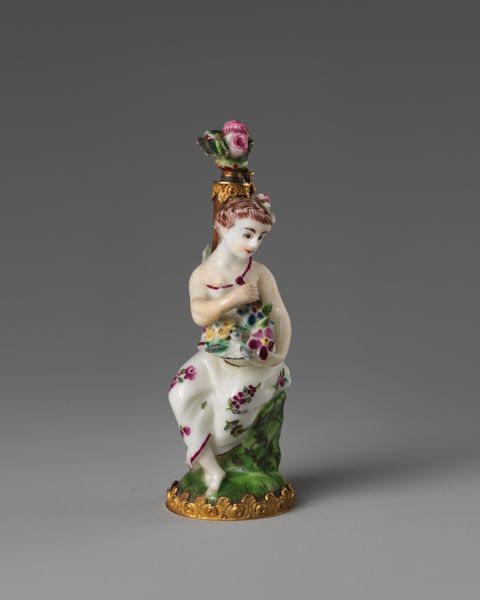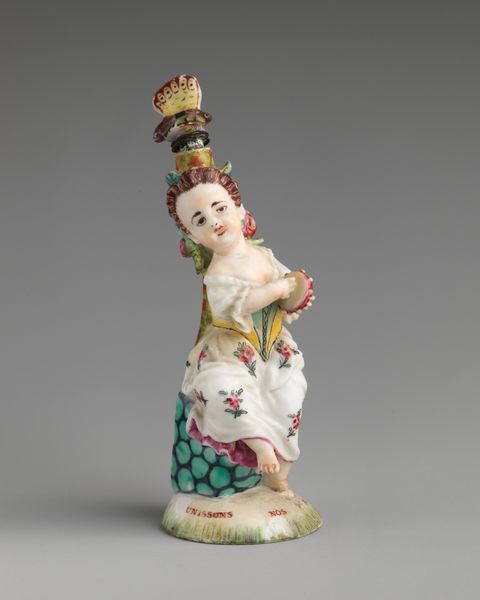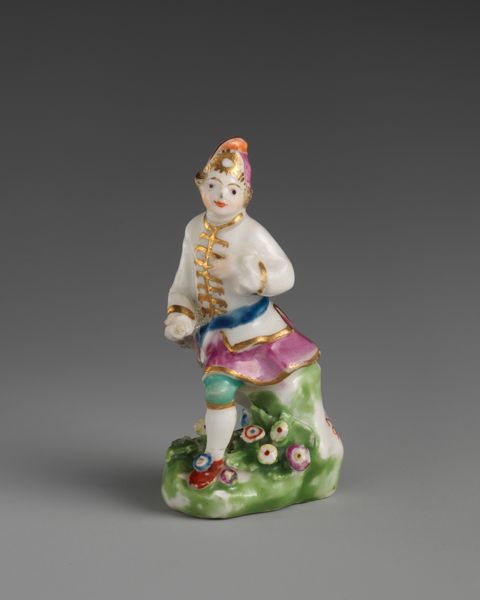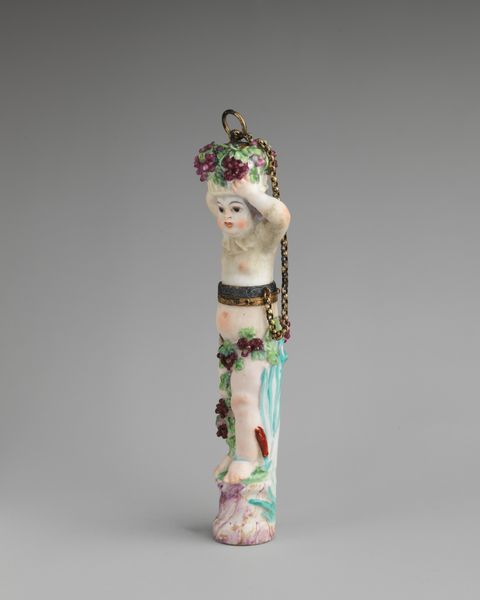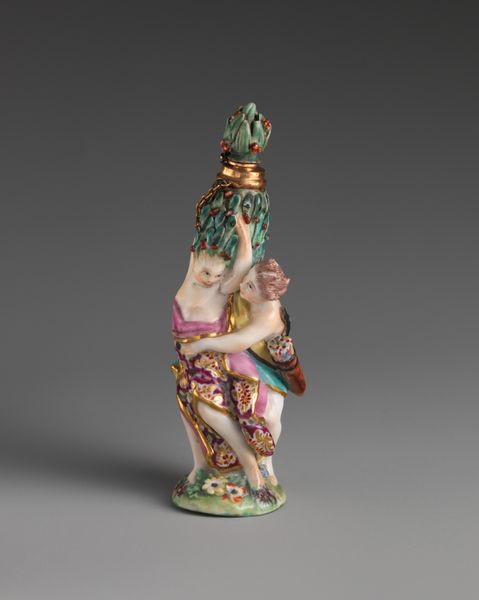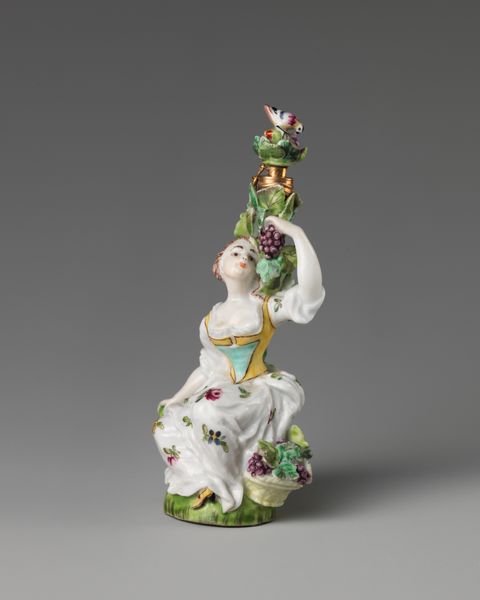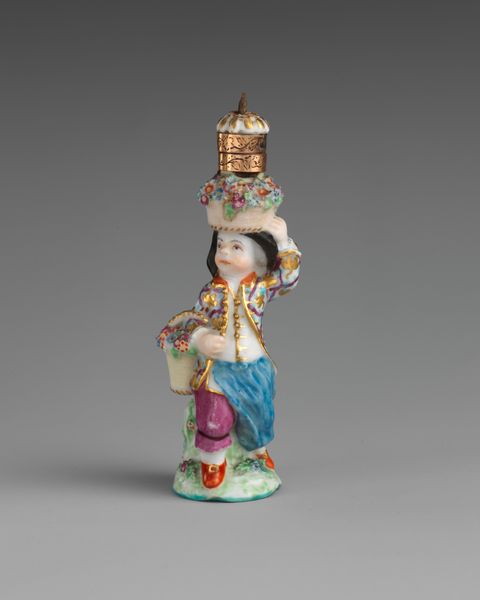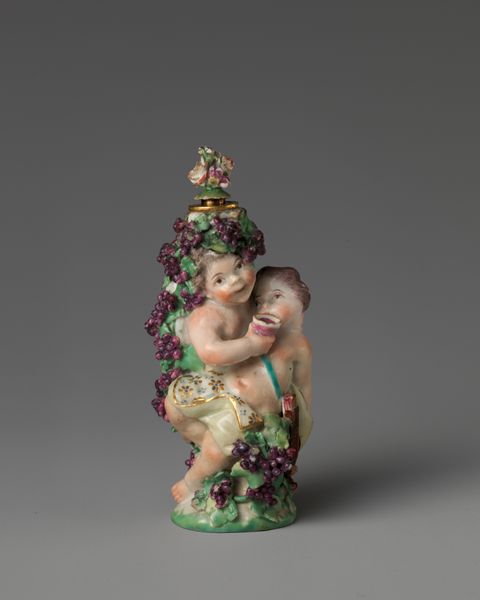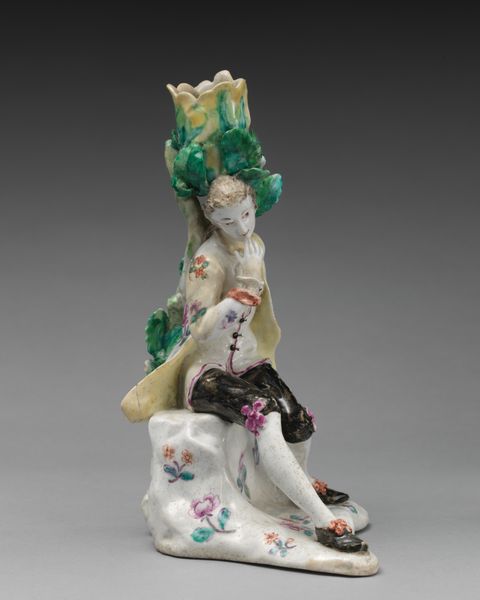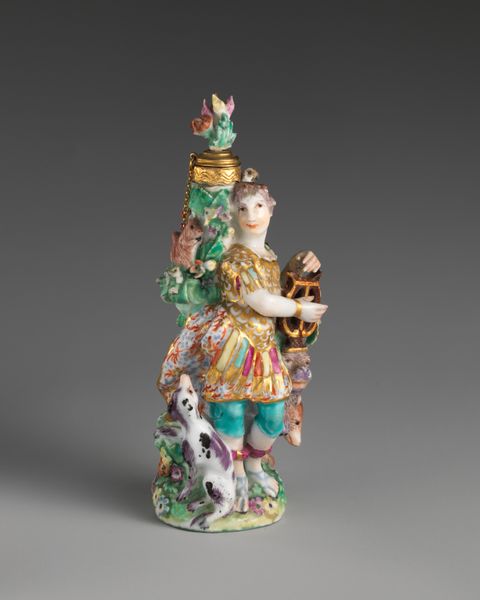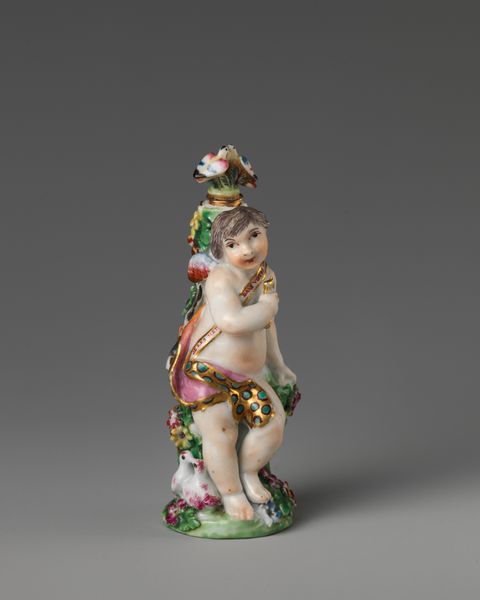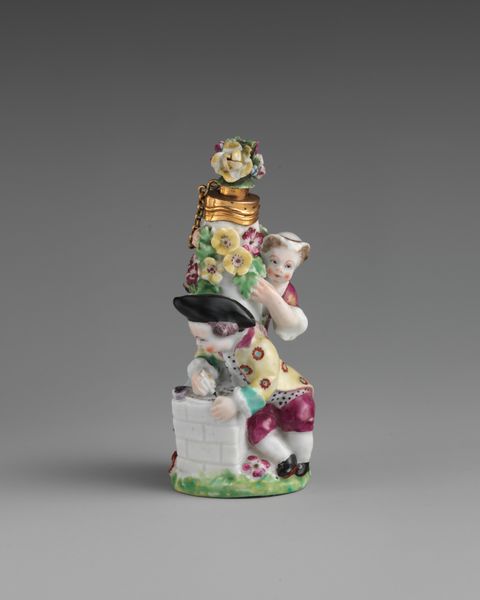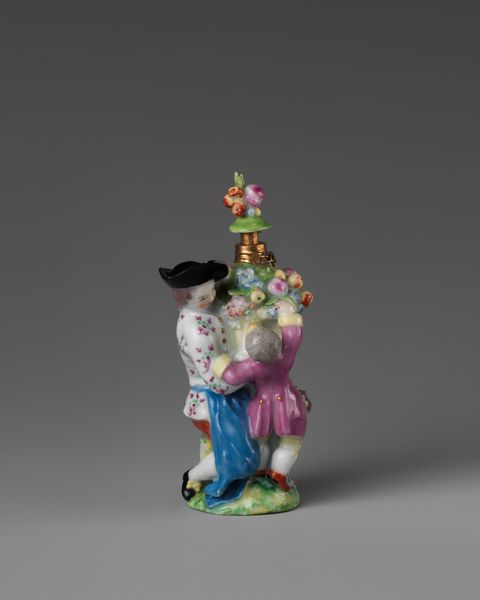
ceramic, porcelain, sculpture
#
baroque
#
ceramic
#
porcelain
#
figuration
#
cupid
#
sculpture
#
decorative-art
#
rococo
Dimensions: 3 1/4 × 1 1/2 in. (8.3 × 3.8 cm)
Copyright: Public Domain
This porcelain figure of Cupid with a globe was made in the mid-18th century at the Saint James's Factory in England. Porcelain is a refined ceramic material, made by combining kaolin clay with a powdered rock called petuntse, then firing it at high temperatures. It is a difficult material to control, often resulting in deformations and imperfections. Here, the Cupid is perched atop a faux-bronze pedestal, his wings and globe delicately painted with enamel colors, while on top of his head sits an object of gilt bronze. The attention to detail in this figure speaks to the culture of luxury and refinement that defined the 18th century. Highly skilled artisans were employed at factories like Saint James's, producing porcelain wares for the tables and mantelpieces of the wealthy. This object gives us insight into the social context of its creation and use. Understanding its materiality and mode of production allows us to appreciate it as more than just a decorative object, but as a testament to the labor, skill, and social hierarchies of its time.
Comments
No comments
Be the first to comment and join the conversation on the ultimate creative platform.
